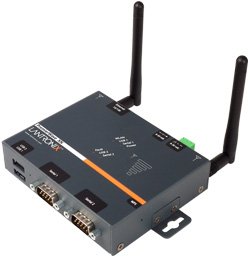Formatting Cells
In Excel, every cell can be formatted differently. There are many options available to customize your Excel workbook, which can make the worksheet easier to read. Excel also provides many number formats, allowing you to standardize how numbers will appear in your document. For more information, refer to Formatting Numbers.
NOTE: To format text (i.e., formatting font face, font size, color, and so on), refer to Microsoft Office 2007: Formatting Text.
- Applying Cell Styles
- Formatting Borders
- Using Conditional Formatting
- Merging Cells
- Wrapping Text
- Copying Cell Formatting
- Clearing Cell Formatting
Applying Cell Styles
Cell Styles are a combination of fill and font color designed to highlight or emphasize cell contents. They are easily applied to your workbook.- Select the cell(s) whose style you want to change
- From the Home command tab, in the Styles group, click CELL STYLES

A pull-down list appears.
NOTE: When you hover your mouse over different styles, a preview of the style will appear in the selected cells. - From the Good, Bad and Neutral; Data and Model; or Titles and Headings group, select the desired cell style
The style is applied to the selected cells.
Formatting Borders
To make certain cells stand out in the worksheet, you may want to format a cell's borders.Changing Borders
- Select the cell(s) whose borders you want to format
- From the Home command tab, in the Font group, click the
 next to BORDER
next to BORDER » select the desired border
» select the desired border
The border is applied.
Changing Border Color
- From the Home command tab, in the Font group, click the
 next to BORDER
next to BORDER » select Line Color » select the desired color
» select Line Color » select the desired color
The cursor changes to the shape of a pencil. - To format individual borders, click the borders you want changed
To format multiple cells, click and drag across the desired cells - To quit formatting border colors, press [Esc]
Changing Border Style
- From the Home command tab, in the Font group, click the
 next to BORDER
next to BORDER » select Line Style » select the desired line style
» select Line Style » select the desired line style - To format individual borders, click the borders you want changed
To format multiple cells, click and drag across the desired cells - To quit formatting border styles, press [Esc]
Deleting Borders
- From the Home command tab, in the Font group, click the
 next to BORDER
next to BORDER » select Erase Border
» select Erase Border
The cursor changes to the shape of an eraser. - To delete individual borders, click the borders you want changed
To delete multiple cell borders, click and drag across the desired cells - To quit deleting borders, press [Esc]
Using Conditional Formatting
Conditional Formatting allows you to format cells depending on how their data relates to other data. For example, in a list of numbers ranging from 1 to 10, you can format cells with data closer to 1 to have red fill color, and cells with numbers closer to 10 to have green fill color. You can also format data bars to appear within the cell, making a concise bar graph within a worksheet. For more information, refer to Working with Conditional Formatting.Merging Cells
A cell merge converts selected cells into a single cell. This can be useful for creating titles.Creating a Cell Merge
WARNING: After a cell merge, if two or more selected cells have data in them, Excel will display the information from the cell closest to the upper left corner, deleting all other data.- Select the cells you want to merge
- From the Home command tab, in the Alignment group, click MERGE & CENTER

The cells are merged and the text aligns to the center
Customizing a Cell Merge
- Select the cells you want to merge
- Click the
 next to MERGE & CENTER
next to MERGE & CENTER
A pull-down list appears. - To merge cells and align text to the center, click MERGE & CENTER
To merge cells only as rows (i.e., columns do not merge), click MERGE ACROSS
To merge cells without setting an alignment, click MERGE CELLS
Removing a Cell Merge
- Select the cell you want to unmerge
- Click the
 next to MERGE & CENTER » select Unmerge CellsThe cell merge is removed.
next to MERGE & CENTER » select Unmerge CellsThe cell merge is removed.
Wrapping Text
If you have text that appears in a single cell and you want to increase the height of the cell without expanding the row or column, you can use the Wrap text option.- Select the appropriate cells
- From the Home command tab, in the Alignment group, click WRAP TEXT

The text wrap is applied.
NOTE: To remove the text wrap, click WRAP TEXT again.
Copying Cell Formatting
If you want to copy only a cell's formatting you can use the Painter option. This will format the destination cell the same as the source cell without changing its content. For more information, refer to Formatting with the Painter.Clearing Cell Formatting
You can remove all cell formatting while preserving text formatting in selected cells (e.g., fill color, alignment, and borders will be cleared, but text color, font size, and font face will not be cleared).- Select the cell(s) containing the formatting to be cleared
- From the Home command tab, in the Editing group, click CLEAR
 » select Clear FormatsThe cell formatting is removed.
» select Clear FormatsThe cell formatting is removed.
Make sure to let me know in the comments below or on our Facebook page how you've got with it or Do you have any questions


No comments:
Post a Comment